A photographic glimpse into Brazil’s ant diversity
Brazil is the largest country of South America and famous for its high biodiversity, glorious foods, and beautiful beaches. So when I got the chance to attend the famous “Simpósio de Mirmecologica” (http://mirmecobh2019.com.br), an ant congress situated in Brazil, I did not hesitate for long. The meeting was situated in one of Brazil’s largest cities, Belo Horizonte, in the heart of the country, in the state of Minas Gerais. The meeting itself was gorgeous, and many ant researchers from all over the world were attending. I had planned to show some pictures of the symposium, but I quickly realized how much I suck taking pictures of anything other than ants. While the symposium itself was already well worth it, I used this chance and stayed an extra two weeks in Brazil.
This time was mainly used by looking for ants, usually with the help of local researchers. This short photographic report will, therefore, give an impression of the beautiful ants of three main habitats that I visited – the Cerrado near Belo Horizonte (Minas Gerais), the Atlantic Rainforest, and a sand dune close to Florianópolis (Santa Catarina).
A Photoblog contribution by Phil Hoenle

Part 1. The Cerrado
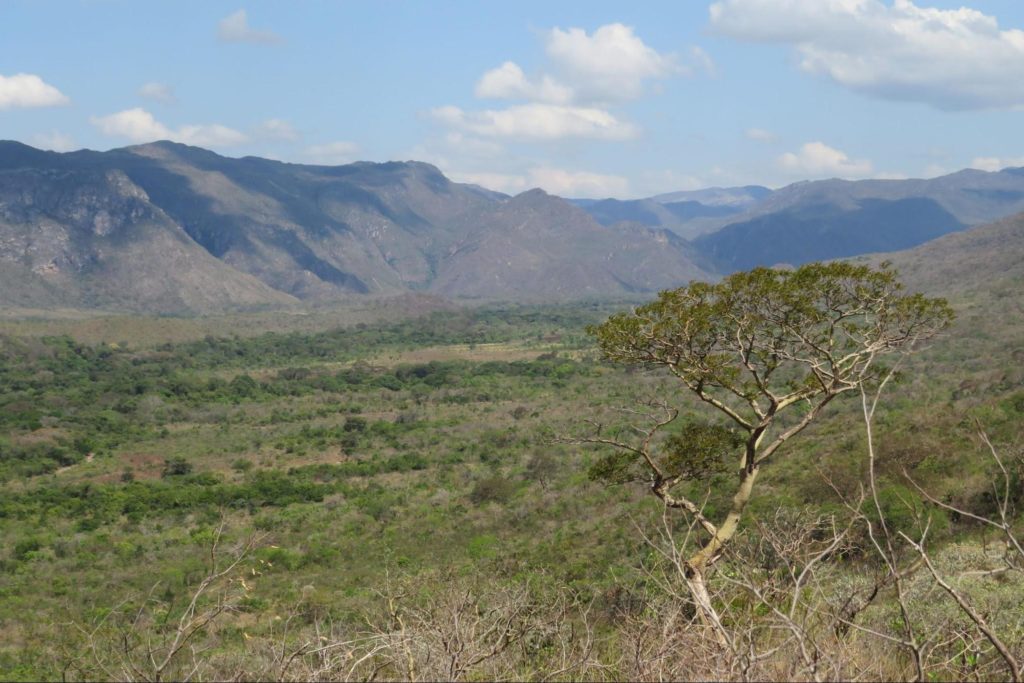
While the huge city of Belo Horizonte (BH) itself is not particularly interesting for anting or landscapes, it is surrounded by the huge steppe landscape called the Cerrado. The Cerrado encompasses an enormous area in Brazil and is one of the arid zones situated between the famous Amazonas Rainforest to the North and the Atlantic Rainforest areas stretching down Brazil’s western coast.
The Cerrado awaits with many ant species adapted to the arid life, and a great deal of ant research has already been done in this habitat by fellow Brazilian ant researchers.
I had great luck to meet up with two of those researchers, Sebastian Sendoya and Marianne Da Silva as well as three of their enthusiastic undergraduates. All of them were planning to collect ants in the enormous and astonishingly beautiful national park North-East of BH called “Cerra do Cipó”. They helped me find and identify a lot of really cool ants, for which I am incredibly grateful. Also, without their rental car I would have run into a lot of problems for sure. In exchange, I helped them to collect colonies of Pseudomyrmex gracilis and Camponotus crassus for their research projects.
The Cerrado is surprisingly heterogenic, from areas with grassland or sand, up to the riverine forests with reasonable high trees. One of the things that stand out are the many plants with extrafloral nectaries to attract a lot of different ants. The ants help the plants by chewing away one or the other insect that might damage the plant. Below is an Ectatomma species licking some of that sweet extrafloral nectar juice.

One of the most common genera here is Camponotus, which could be seen anytime and almost everywhere. For instance, in the warmer areas such as the sandy roads, Camponotus blandus would roam even during noon on the hot floors. They have a dense, golden pubscens over all of their body, which perhaps serves some thermoregulatory sunray reflection. These ants can also be seen at nectaries, but when we opened up a termite nest, they did not take long to notice, and subsequently brought termites to their earthen nest in a surprising speed.
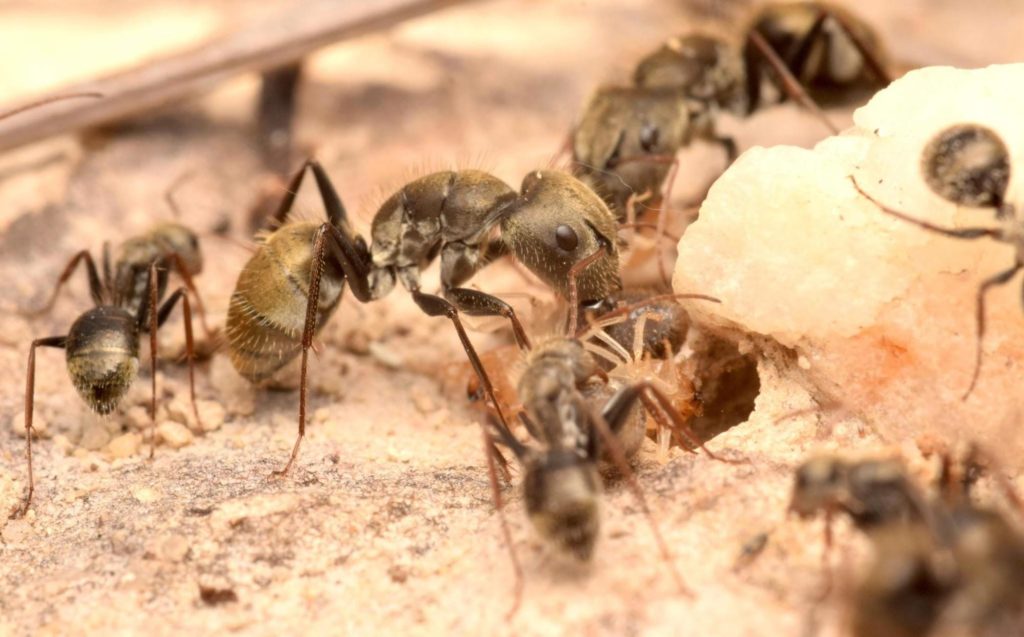
Another however less common Camponotus ant was Camponotus leydigi, which has one of the most beautiful red coloration that I have ever seen in an ant. Sometimes I could observe a single worker slowly and carefully moving on the forest floor, but when it got scared, stopped or hid under some leaves.
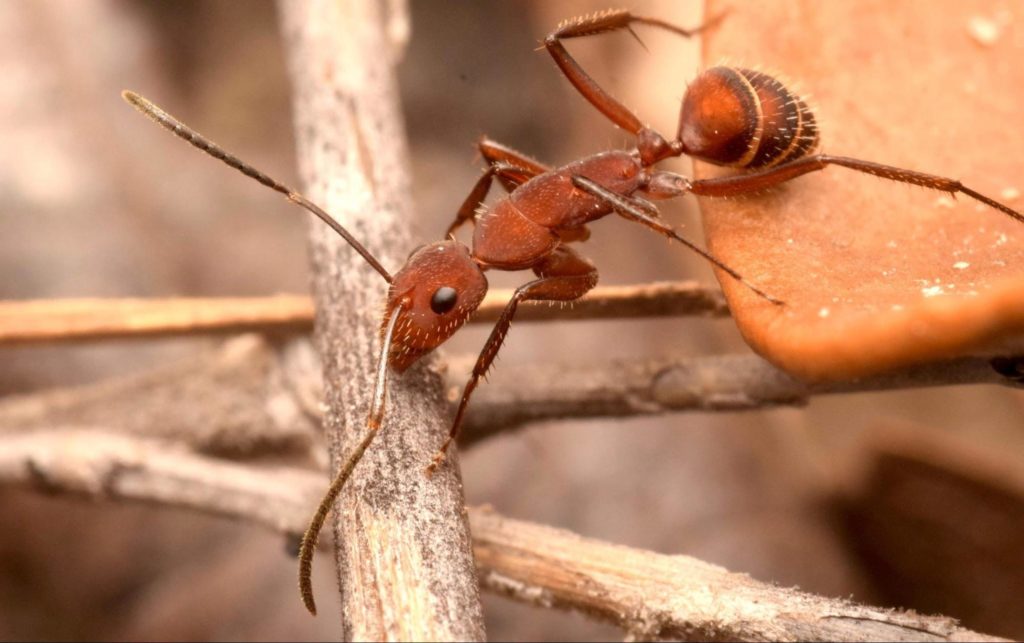
However, their coloration varies, and there are some colonies that have workers with more of a dirty brown than a red. In the picture below, one can see such a Camponotus leydigi worker taking care of a planthopper, which provides honeydew.
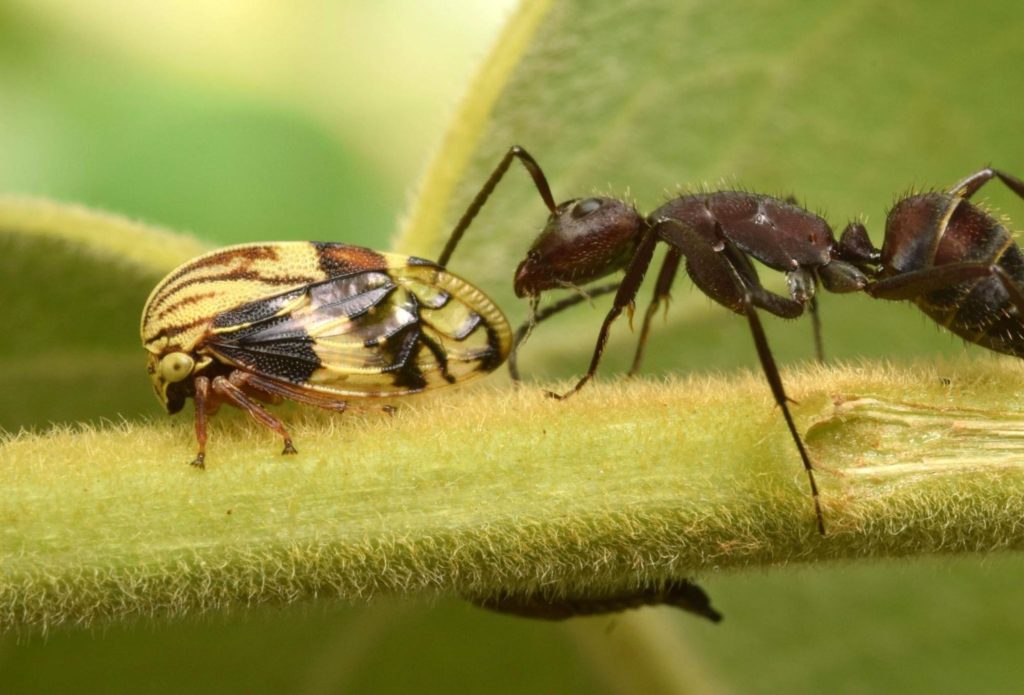
During our lunch break, a piece of cheese turned out to be exceptionally attractive towards an Ectatomma species. The region of Belo Horizonte is famous for its delicious cheese, so I was not surprised that the ants went crazy for the milk product.

Alongside a waterfall, we observed a column of the golden Camponotus mus walking together. This type of foraging can be seen in several Camponotus species, and it is always fun to watch. In this case, a group of around 5 minor workers was accompanied by a major worker following along.

Besides insects and honeydew, a major nutritional source for ants in the Cerrado are seeds. There are a number of so-called granivorous ants, that have specialised on integrating oil and protein-rich plant seeds into their diet. In the sandy area, we encountered, to my absolute joy, a species of Pogonomyrmex. I have never seen this genus in the wild before but heard much about them. Apparently, there was competition going on, as we observed a group of Pheidole attacking a Pogonomyrmex cf. naegelii worker. Perhaps these Pheidole were also after seeds?
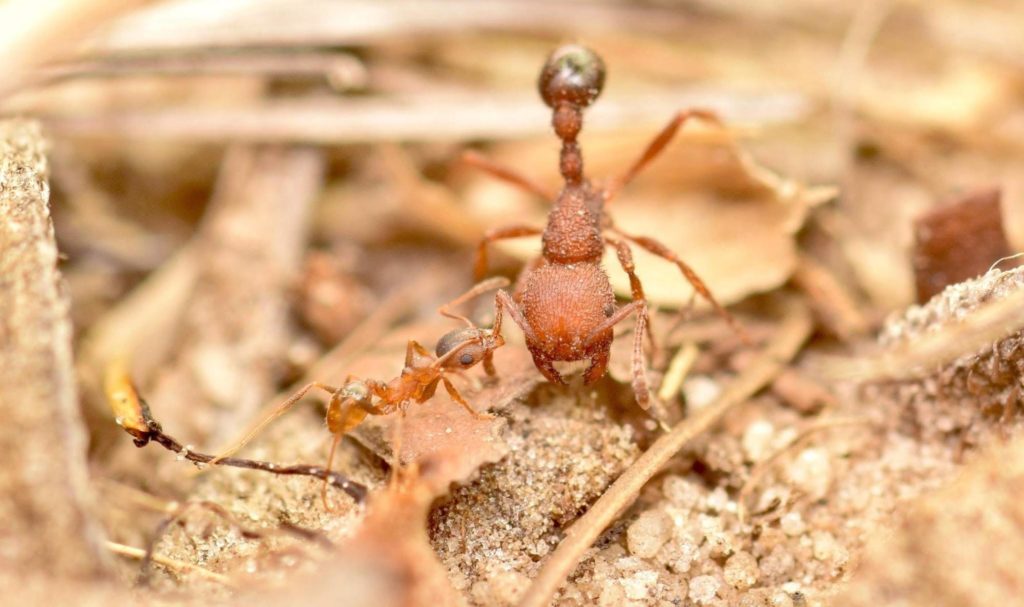
In the Cerrado, we found Pseudomyrmex gracilis – an ant which is wide-spread all over the Neotropics. There are two morphs found here in the Cerrado: One is a typical black and red colored, and the other one, which is completely black. This black one might be a different species, as it behaved quite differently. When foraging, it was compressing its body in a weird shape, which made it look really similar to a small Camponotus (e.g. C. crassus). Also, their queen was very worker like with reduced wing musculature. Interestingly, there is another look-alike association known in the Cerrado, that of Camponotus blandus and Pseudomyrmex termitarius (see Gallegro-Ropero & Feitosa 2014 Sociobiology).
Last but not least, the true highlight of the Cerrado is the incredible diversity of turtle ants (Cephalotes). After several talks about these amazing ants during the Myrmecological Simpósio, I was very eager to see some of the most famous species that are out there – and I was not disappointed! The most common ones are Cephalotes pusillus, which I already encountered on the campus area. In Cerra do Cipó, we saw several times the giant Cephalotes atratus and the really weird Cephalotes clypeatus.
Part 2. Sand Dunes of Florianópolis
My journey continued to the city of Florianópolis, which is a touristic highlight even without any ants. Located on a peninsula in the South of Brazil, it has amazing beaches and a modern vibe. But Florianópolis has even more to offer; a gigantic natural sand dune and a stretch of the Atlantic Rainforest, both within close proximity. This time, I was lead around by local ant scientist Félix Rosumek, whom I have known for a long time because he did his PhD in Darmstadt (where I am currently located). He knew the best spots for anting in the surrounding area, and I was very grateful for his expertise as well as his hospitality.
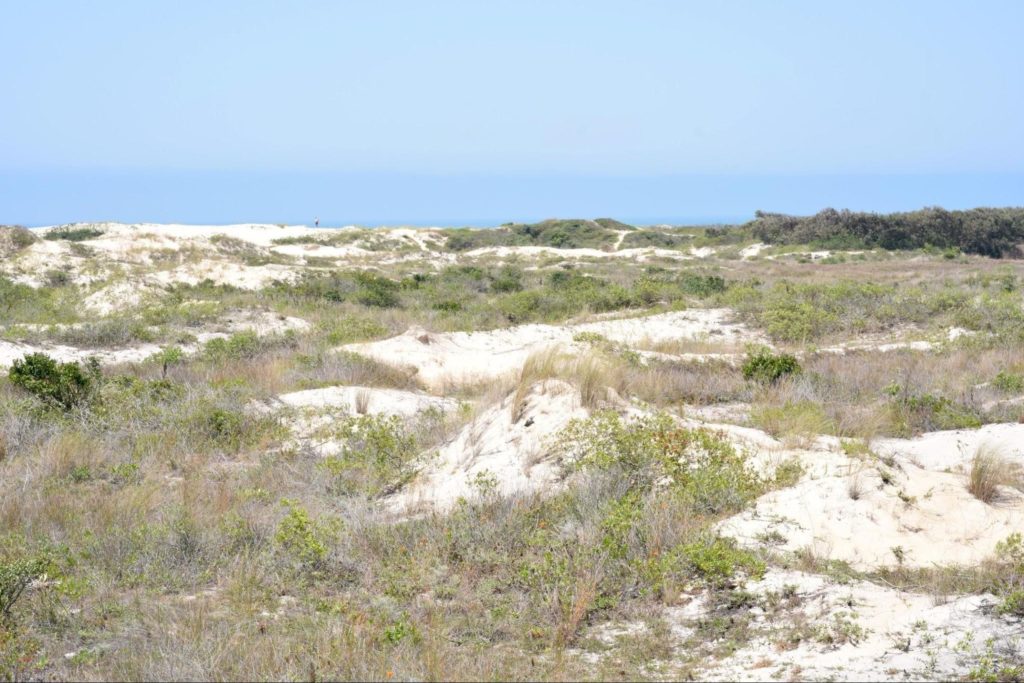
Probably the most recognizable ants here were Acromyrmex striatus, which have quite a unique look to them. Their nests, often just sandy holes, are everywhere, and when it is not too hot the workers roam around and carry a lot of plant material back to their nests. Of course, in this environment, it is kind of hard to get fresh, young leaves, so this species does not seem to be very choosy and takes in e.g. hard grasses, which are also cut down by the ants in a tedious manner.
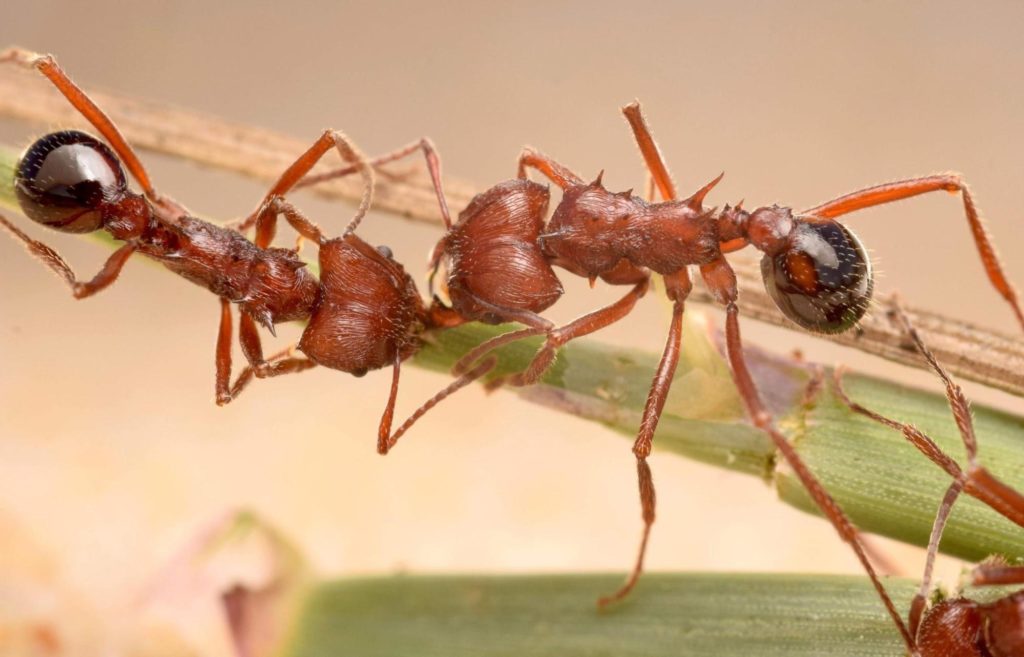
They were not the only fungus-growing ants here, we saw many black Trachymyrmex and the tiny Mycetophylax morschi, another sand dune specialist. Both pictures below show M. morschi.
Then, similar to the Cerrado, we also encountered multiple nests of the seed-harvesting ant – Pogonomyrmex naegelii, which also gratefully accepted some sugar water as bait.

Despite the heat in this environment, there were also a couple of tiny ants, among them a dune-specialist Brachymyrmex with a black coloration.
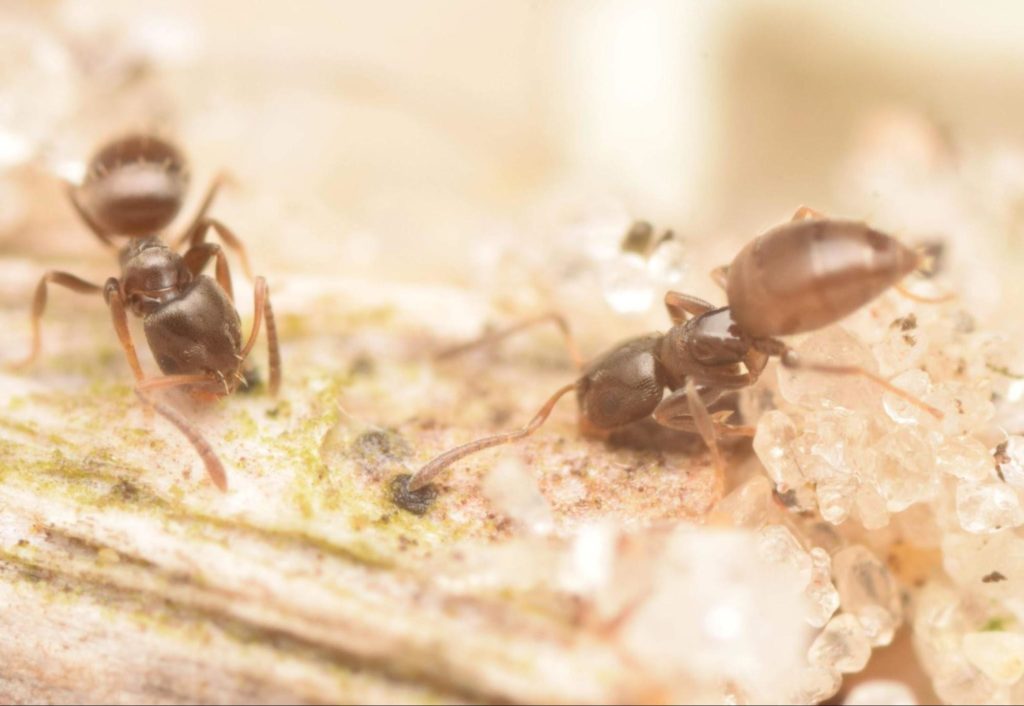
Camponotus rufipes were found here frequently. They build large, distinct nests in the lower shrubs with a lot of plant material, mostly dried grasses
Some dry stems of old lower shrubs provided nesting space for quite a lot of ant species. Among them are this small black shiny Camponotus, and a Solenopsis. Here, the sand grains from the surrounding landscape form a nice contrast to their orange bodies.
Yet, things are not only happening on the ground in the dunes. In the dry shrubs, there can be quite an amazing lot of smaller ant species nesting in twigs. We found a yellow species of Pseudomyrmex and Myrmelachista cf. catharinae (thanks to Rodolfo Probst for ID!).
Part 3. Atlantic Rainforest
The pictures that follow now are actually from two different excursions; a mostly shrubby forest really close to the coast, North of Florianópolis, and the other one to a more mature forest right next to Florianópolis, but not as close to the coast. Both were very humid, typical tropical evergreen rainforest environments.
Large parts of the lower vegetation were dominated by Crematogaster species. They are the main beneficiates of the ant-plants here, mostly Inga species with their extrafloral nectaries. Their colonies of the common Crematogaster nigropilosa are polygynous, and when opened the workers ride on their queen to protect it from intruders, sticking up their gaster and excreting the Crematogaster-typical pungent secretions from their stinger.
But there were lots of other ants that we encountered in the twigs. For instance Camponotus (as always), but also beautiful Pseudomyrmex species and even a nest of Procryptocerus – of which we saw the queen!
In another incident, we stumbled upon a Nesomyrmex nest in a low hanging twig. These little ants are really beautiful, having short spines and interesting cuticular patterns all over their body.
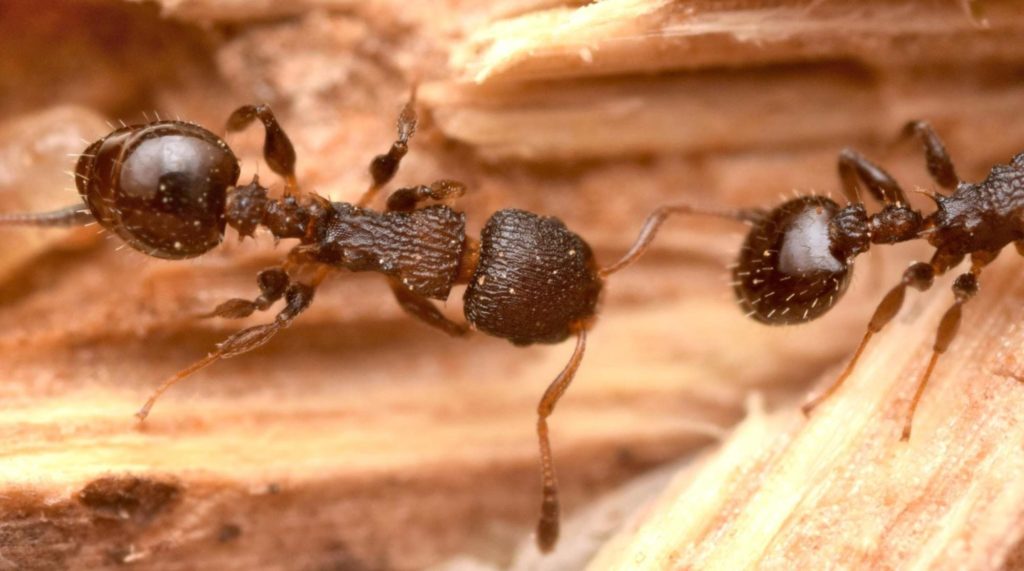
On one tree, there was a formicine ant that at first, I could not recognize. After taking pictures and with professional help from Felix it became clear that this was a weird large Brachymyrmex nesting in a tree. I have only known Brachymyrmex as those tiny black or yellow ants, but that is clearly not true for all of them.
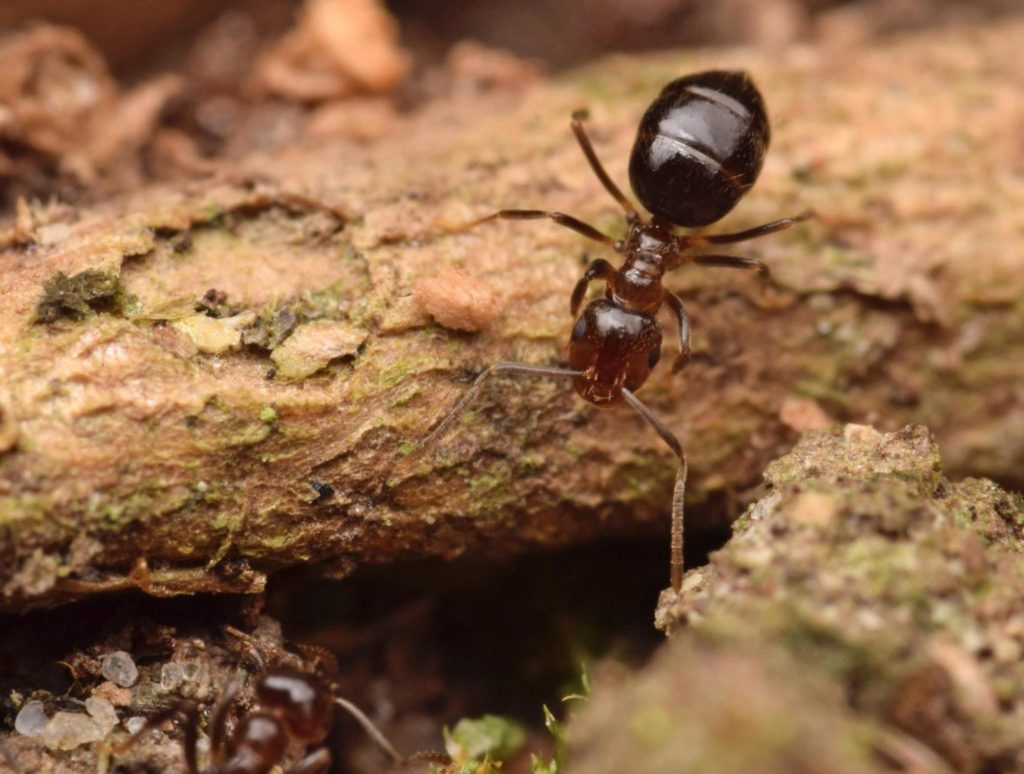
On one occasion, we accidentally stepped on a slug. The victim quickly attracted several Pachycondyla striata workers, that were proceeding to get a piece of meat for their colony. We suddenly felt less sorry about this accident than we should have.
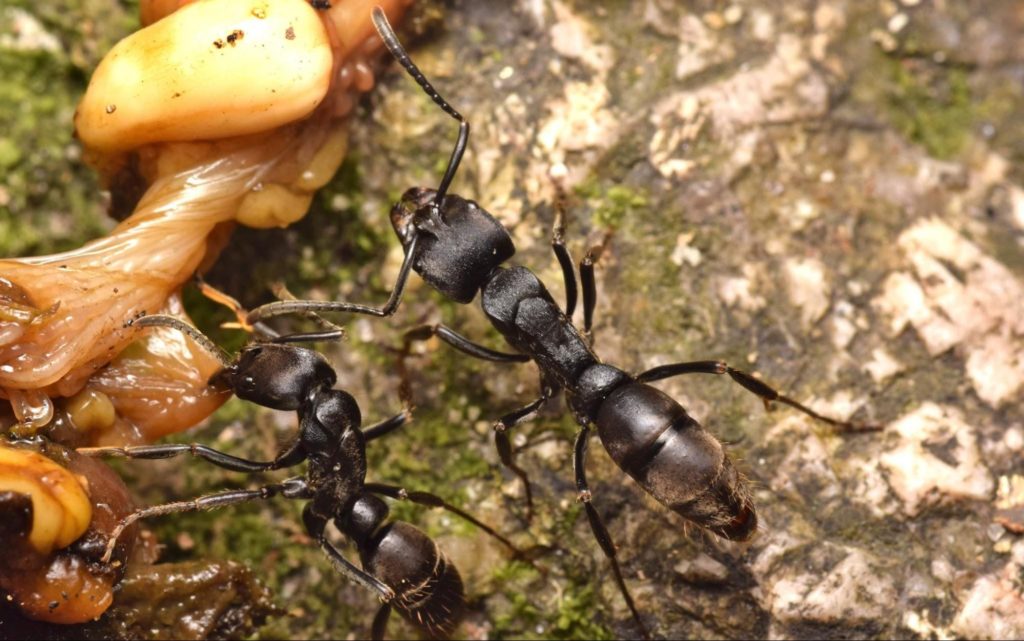
One of the very top of my bucket-list of “ants that I need to see” is the species-poor genus of Heteroponera, which are rather rare ants, but are most species-rich exactly in this southern part of Brazil. According to Felix, we would be able to find them in this forest. And indeed, after turning a big log on the forest floor, we were delighted to see a rather large orange worker of Heteroponera dolo, just waiting to be photographed. More workers came by, including some transporting a beetle larva as prey. We immediately came to the conclusion that their nest must be somewhere in that log, so we started to take it apart, piece by piece. And boy it was a great log! I do not even remember how many ant nests we have stumbled upon, but it was a lot. Unfortunately, there was no sign of the Heteroponera dolo nest. Then suddenly, we found a Heteroponera nest in that same log – but of a different species! It was Heteroponera mayri (thanks to Felix Rosumek &Rodrigo Feitosa for the ID).
Finally, I could happily return home the day after. Brazil was an amazing experience, but I have seen only a tiny fraction of what can be found in this huge country. I feel very humble towards the many ant researchers that this country hosts, while at the same time being worried that the political climate is making research tough. I really hope for all the researchers that there will be a more positive development in the future.

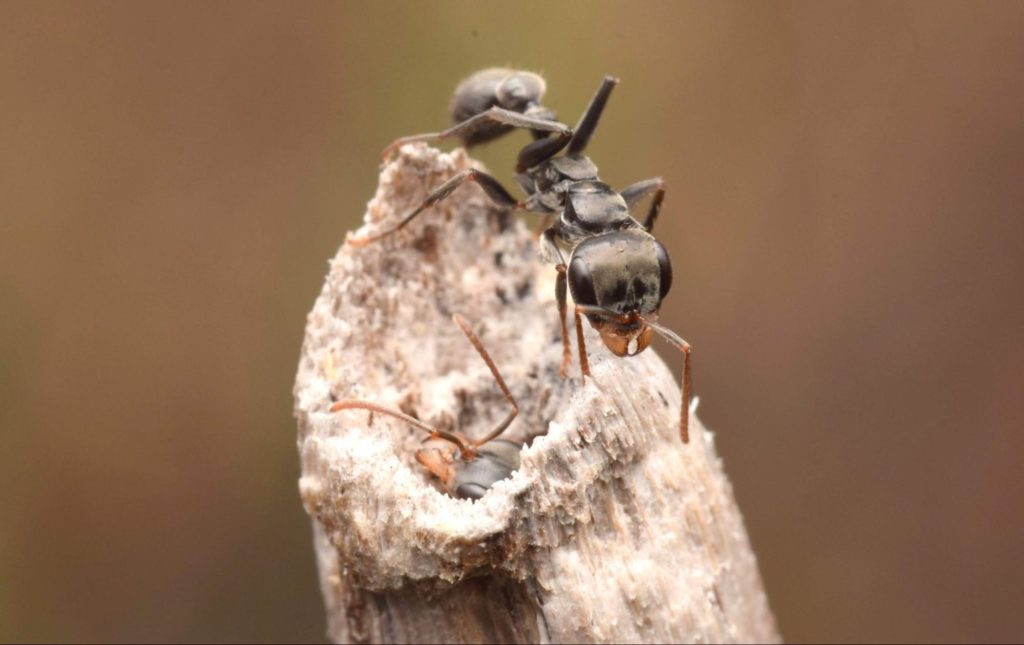


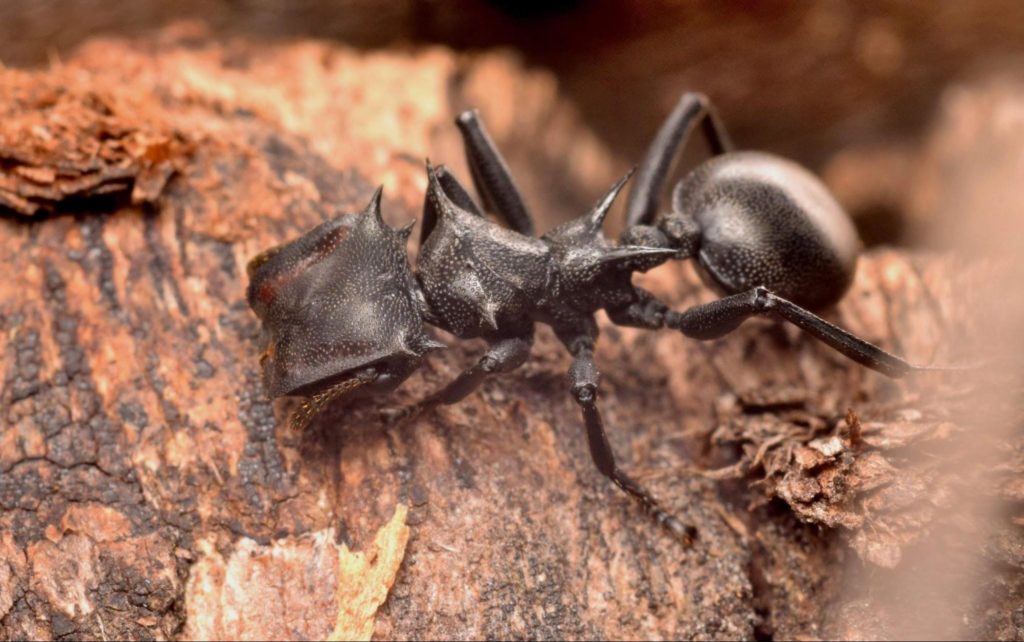


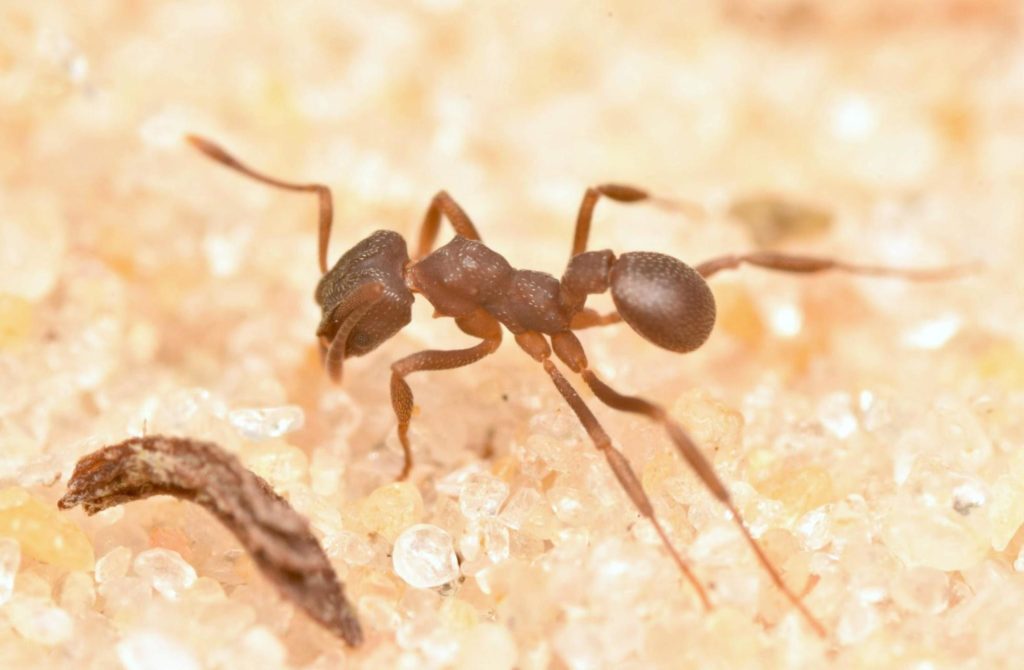

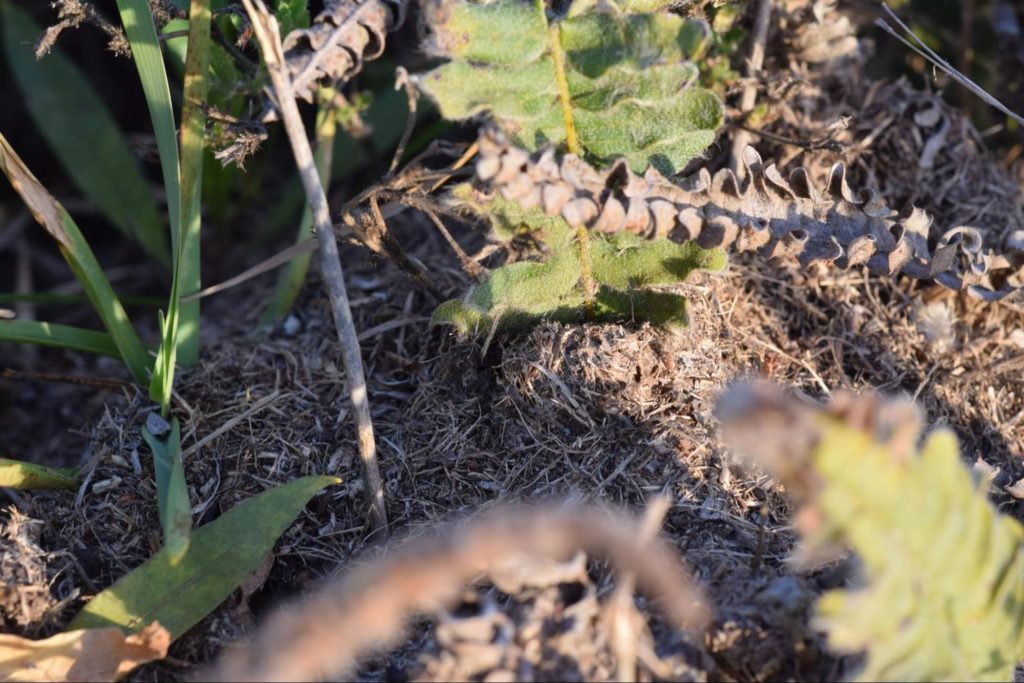
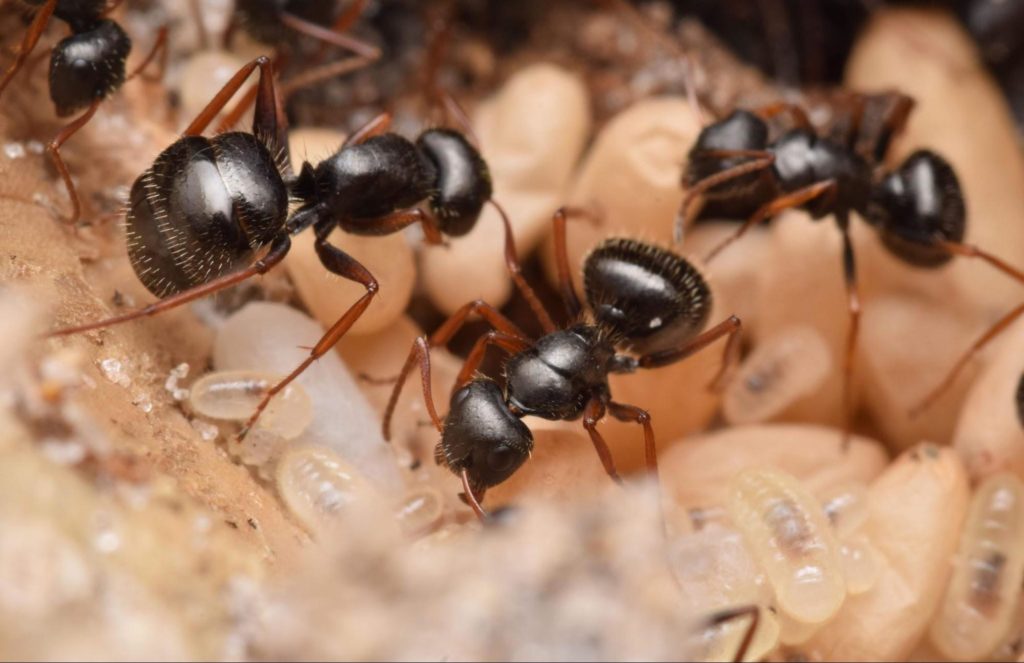
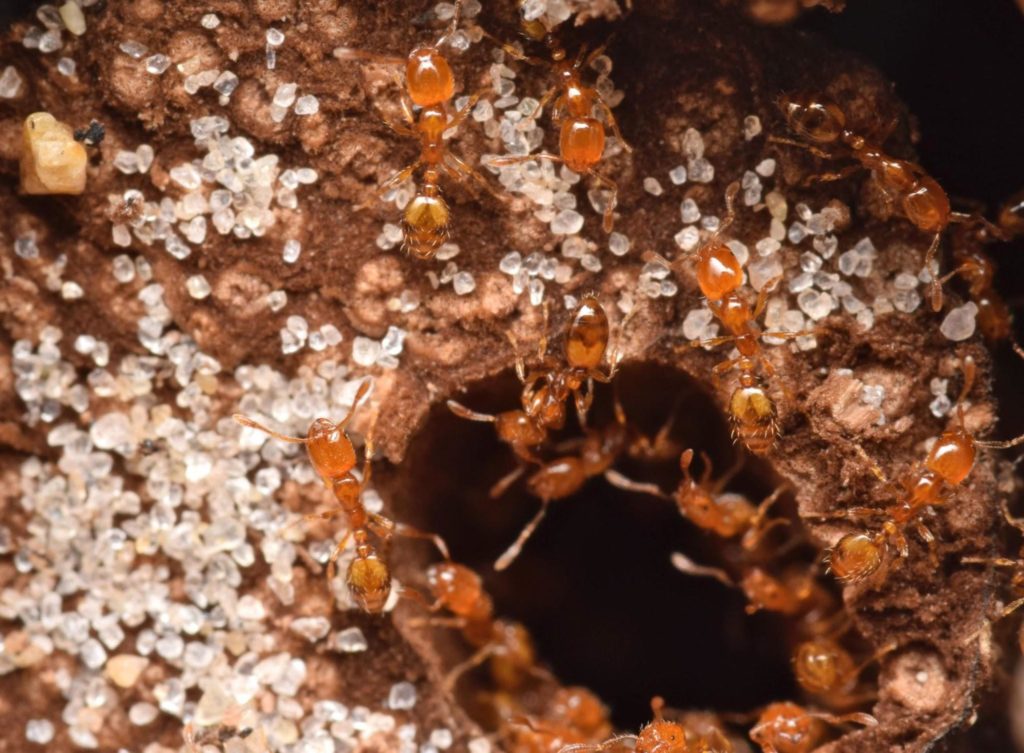
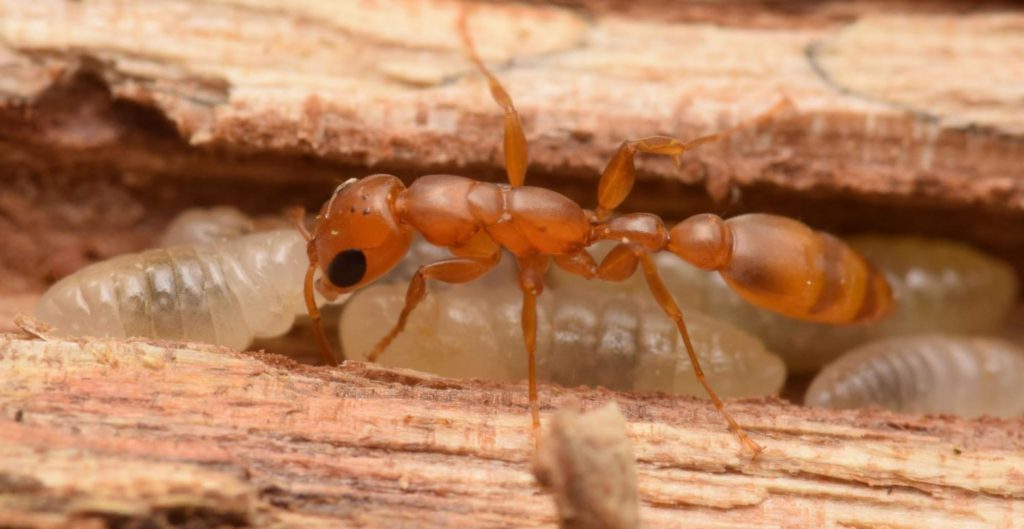
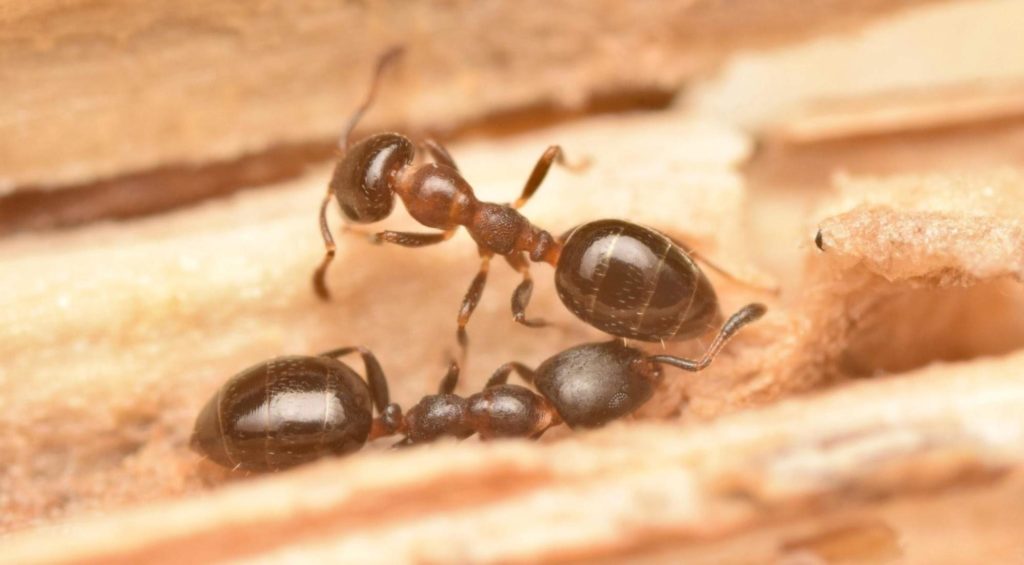
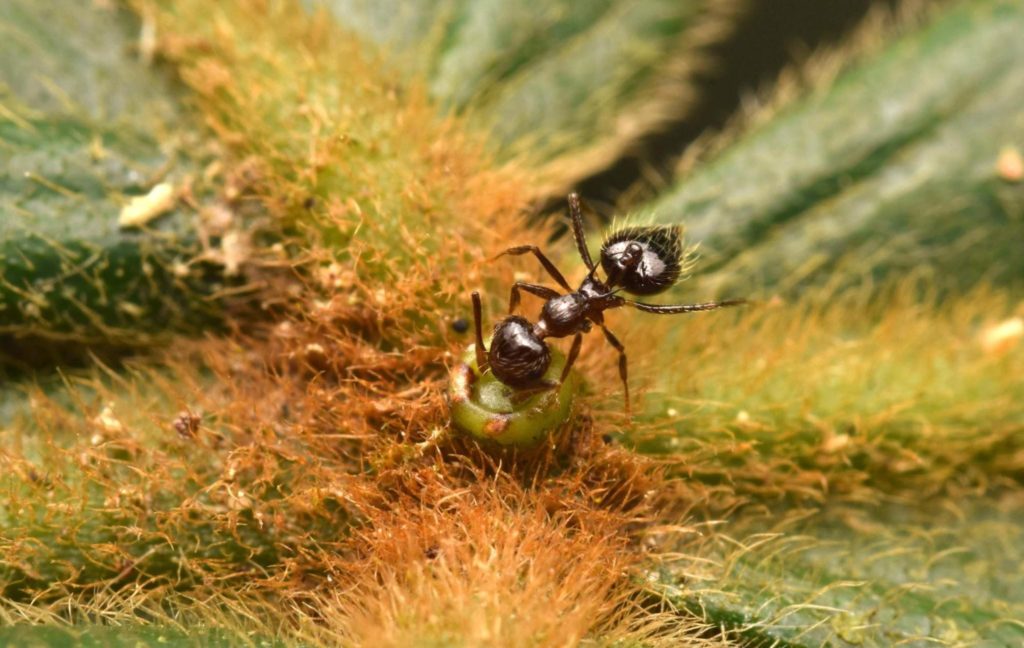
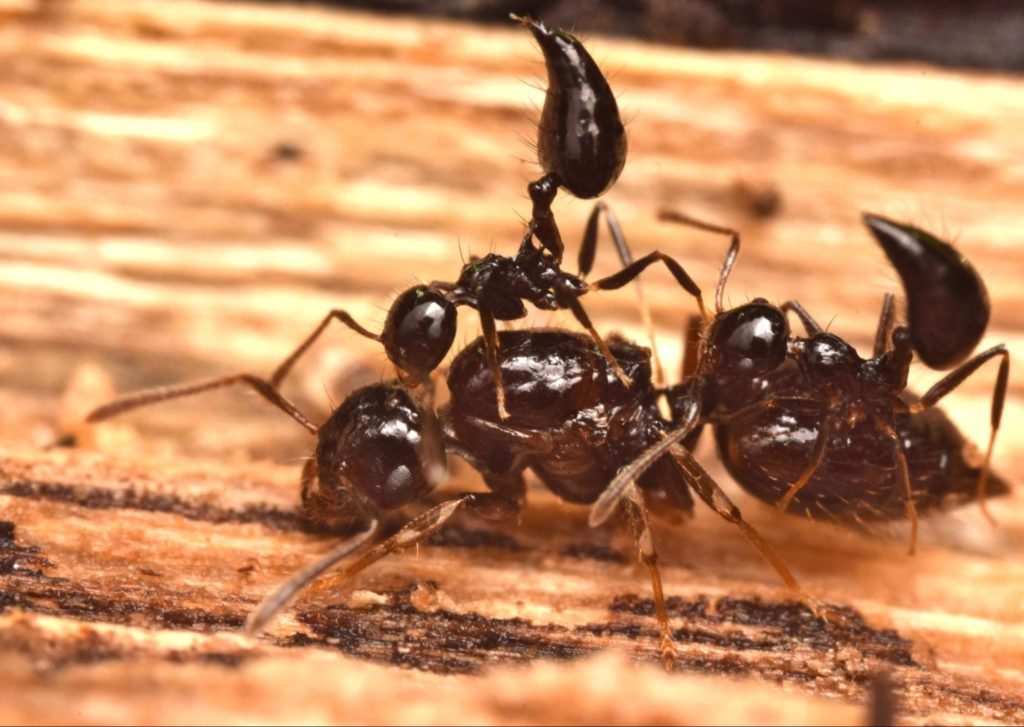


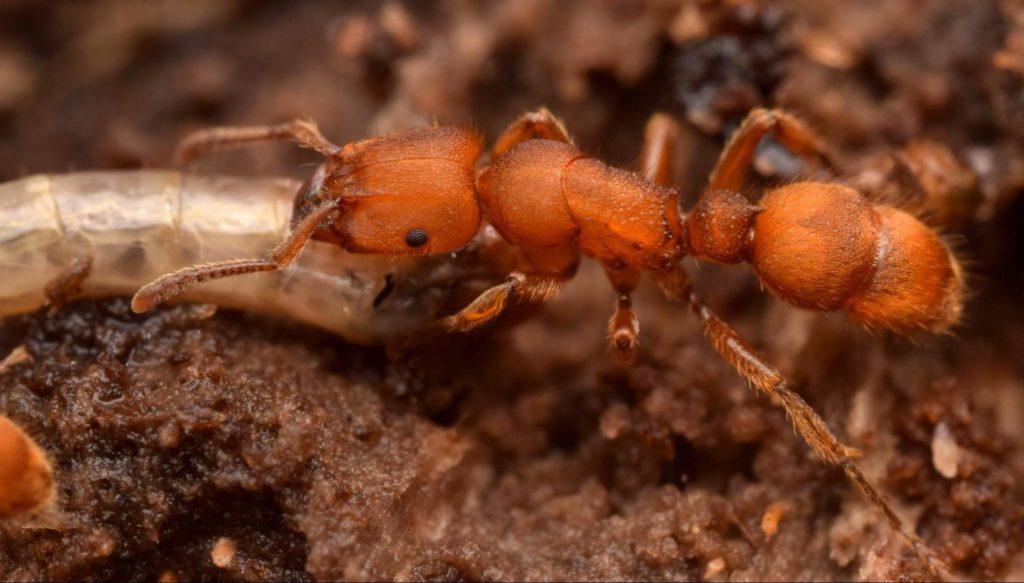
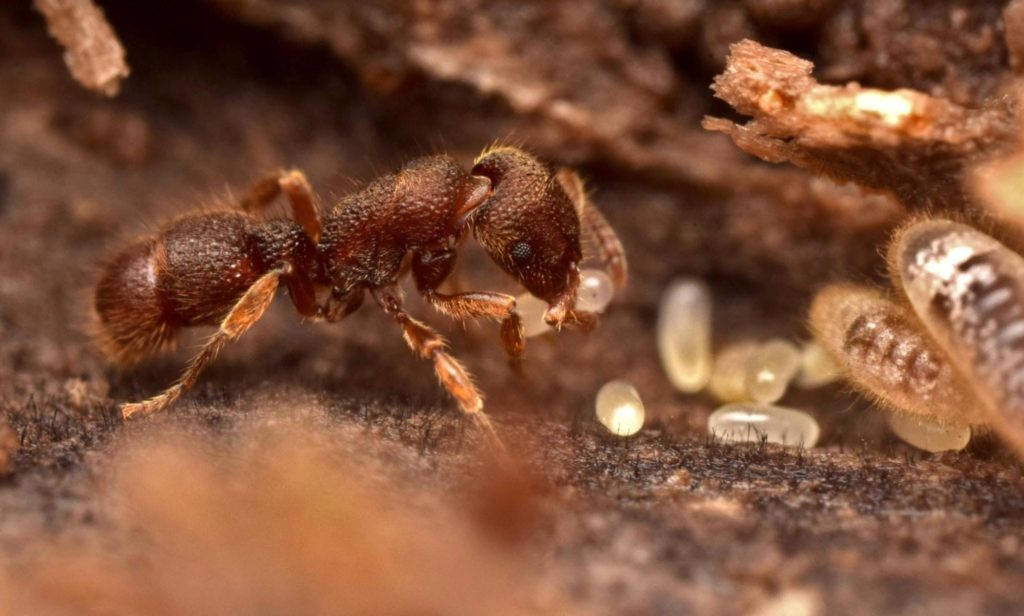

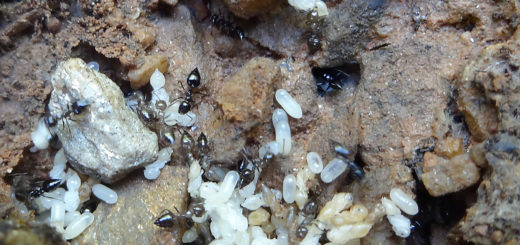
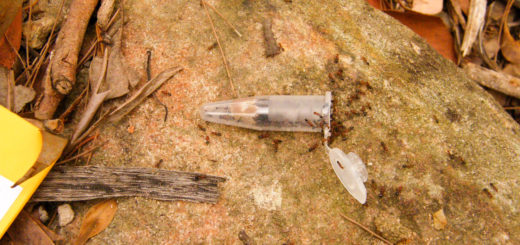

AMAZING PHOTOS! Thank you!!!
Thank you very much, Kyle!
Great pictures, Phil. Some old ant friends from my time in Mato Grosso, and several new ones, especially the two Heteroponera.
I live in Belo Horizonte and i often see trapjaw ants. They seem pretty common here.